

Cornwall Online || Penzance
|| Porthleven
||
Helston
|| Falmouth
|| Truro || Roseland
Peninsula

TALL SHIPS AT TORQUAY 10TH - 13TH SEPT 2008
SEE BELOW FOR DETAILS
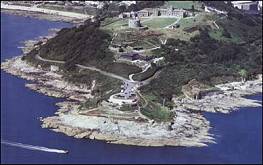 |
 |
| HOLIDAYS IN FALMOUTH |
|
Falmouth Holiday accommodation
|
|
'An experience as alive as the sea' This unique maritime heritage is exhibited over three floors (in 12 state-of-the-art galleries), each focusing on different aspects of industry, work and communications. The National Maritime Museum Cornwall has been designed to create a wide appeal, offering a diverse range of 'hands-on' displays and an unrivalled collection of boats - including many in active use on the water. |
|
The National Seal Sanctuary is set in the picturesque Helford Estuary, by the beautiful village of Gweek, in Cornwall. The Sanctuary is a busy rescue centre, and also has resident Grey Seals, Californian and Patagonian Sea Lions, Goats, Ponies and Otters |
| HOLIDAYS IN FALMOUTH |
|
Falmouth Holiday accommodation
|
| SAILING IN FALMOUTH |
|
Yacht Charter - Falmouth and South West Cornwall. RYA Sail & Motor Training |
In Britain's Western Approaches lies the port of Falmouth - south west Cornwall's premier resort and home to Cornwall's maritime heritage.
Washed by the ocean and warmed by the Gulf stream,Falmouth basks on the shoreline of the world's third largest natural harbour - the gateway to a beautiful network of rivers and creeks.
Famous for its beaches and castle and infamous for its smugglers and pirates - Falmouth has protected the deep water anchorage of the Carrick Roads since Tudor times.
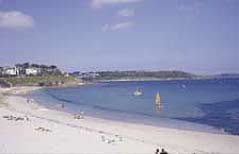
Playing and relaxing on the resort's four main beaches of Gyllyngvase, Castle, Swanpool and Maenporth is a true delight. Feel the sand between your toes as you stroll along these wide expanses, cleansed daily by the ebb and flow of the Atlantic.
This is surely the perfect arena for sunbathing, swimming, sandcastle building or simply forgetting the rest of the world exists . . .
For a wilder time, try tackling the rapid river run and wave machine at Ships & Castles Leisure Pool on Pendennis Headland or run the gauntlet at Laserforce, Falmouth's live action laser game.
Pirates, Smugglers, Poets, Wreckers, Packet Ship Captains and Cannibals!
Discover Falmouth's nautical and notorious past at the Cornwall Maritime Museum and take a guided maritime walk with our qualified Blue Badge Guides.
Getting about could not be easier. Leave your car behind and climb aboard one of the many pleasure boats and ferries which ply the local waters to St Mawes, Flushing, Smuggler's Cottage at Tolverne, Truro and the Helford Passage. Yachts with skippers can be chartered by the day.
Falmouth was once home to the Packet Ship service which sailed to the Mediterranean and the Americas from 1688 to 1852 carrying mail and goods. These world wide links across the seas led to the development of large private gardens, where exotic plants from as far afield as China and Australasia thrived in the regions subtropical climate. These award winning gardens are now open to the public and are packed with magnolias, rhododendrons, tree ferns and palms.
In addition to Falmouth's four central gardens of Fox Rosehill and Queen Mary - both Green Flag Park Award winners, Kimberley Park and Gyllyngdune, the vast gardens of Trelissick, Glendurgan and Trebah are all within easy reach.
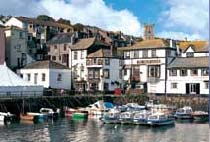
Explore Falmouth's bustling town centre with its craft shops, fresh seafood sellers, harbourside pubs and restaurants plus chandlers and vendors of all things nautical.
The Arts Centre (The Poly) in the heart of town has a lively programme of events from theatre to film and exhibitions from local artists while the Art Gallery with its Tuke and Waterhouse paintings hosts touring displays from all over Britain.
The Princess Pavilion theatre and tea-rooms are set among the subtropical Gyllyngdune Gardens by the beach and is a great place to pick up bargains at the antique fairs and flea markets held throughout the year.
The resort also has the only full size all weather bowling green in Cornwall.

Falmouth is a dazzling waterworld - with sailing and diving
schools, local fishing trips and watersports activity centres offering
expert advice, tuition and equipment for hire - making it oh so easy for
you to spend hours and even days enjoying your favourite water-based activity
or even learning a new one.

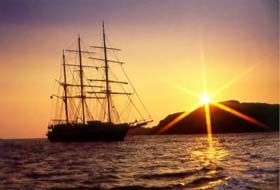 |
 |
From 10th - 13th September 2008 Falmouth's
port will host the Funchal 500 Tall Ships Regatta. This Tall Ships Race
marks the 500th anniversary of the founding of the port of Funchal in
Madeira. The fleet of sail training Tall Ships will gather in the historic
port of Falmouth before racing to the Ilhavo (Port of Aveiro), Portugal
. For full information visit the Funchal 500 website www.falmouthtallships.co.uk.
The ships taking part in September will be made up of The Kruzenshtern, The MIR, The Sedov, The Grand Turk, Mercedes, Artemis and The Europa. Up to 10 large or square-rigged vessels are expected in Falmouth Docks plus another 20 smaller ships. These will start arriving probably on 9th September. The ships will be open to the public from 10th to 12th.
Falmouth played host to the international
Tall Ships Race in 1982, and many people will remember the huge success
of the Tall Ships Festival in 1998. The port now has a permanent organisation
in place to welcome sail training ships, and is recognised as a ‘sail
training friendly’ port.
Onboard visits of the ships will be available
prior to the race, plus day sails. It is planned to have street markets,
concerts and theatre and fireworks in the town.
FALMOUTH'S HISTORY

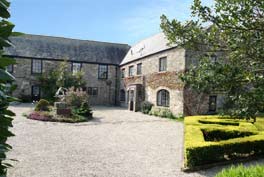 Falmouth
has come along way since 1600 when it only consisted of two houses, a
smithy and an alehouse, but when Sir Walter Raleigh stayed with
Sir John Killegrew at Arwenack House, he was so impressed
with its geographical features that he recommended that the site should
be developed as a port.
Falmouth
has come along way since 1600 when it only consisted of two houses, a
smithy and an alehouse, but when Sir Walter Raleigh stayed with
Sir John Killegrew at Arwenack House, he was so impressed
with its geographical features that he recommended that the site should
be developed as a port.
Sir John gained Parliamentary approval to develop the site and within a few years the village started to grow.
Originally known as Smithwick or Smithick it later became known as Pen-y-come-quick ("the head of the narrow vale").
In 1660 a Royal proclamation changed the name to Falmouth. For nearly 300 years Falmouth remained one of the principle ports of the world, where during the mid eighteen hundreds it was not an uncommon site to see 350 ocean-going sailing ships at anchor in the "Carrick Roads" at any one time.
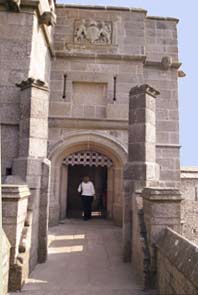 As
Falmouth developed during the seventeenth century, the oldest building
that it can boast is the Elizabethan manor of the Killegrew's at Arwenack
House. However, much of this was destroyed during the Civil War, and what
remained was incorporated into the replacement building built in 1786.
As
Falmouth developed during the seventeenth century, the oldest building
that it can boast is the Elizabethan manor of the Killegrew's at Arwenack
House. However, much of this was destroyed during the Civil War, and what
remained was incorporated into the replacement building built in 1786.
The parish church of King Charles the Martyr was built between 1662-64, while off the main streets some of the original 17th and 18th century cottages may still be seen.
Pendennis Castle CLICK HERE FOR MORE DETAILS
On the nearby headland of Pendennis Point stands the imposing Pendennis Castle, built between 1539-64 by King Henry VIII as a defence against the French.
During the Civil War the castle was held for the Crown by the 80 year old Colonel John Arundel of Trerice, who defended it during a six month siege in 1646.
 The
Parliamentarian besiegers were so impressed with the courage of the Royalist
forces, that when they finally surrendered in August 1646, they allowed
the 24 officers and 900 men to march out of the castle with full military
honours - bearing their weapons and banners flying.
The
Parliamentarian besiegers were so impressed with the courage of the Royalist
forces, that when they finally surrendered in August 1646, they allowed
the 24 officers and 900 men to march out of the castle with full military
honours - bearing their weapons and banners flying.
Nowadays, the Castle, with its incredible views across the ocean to the headlands of St Mawes and the Lizard Peninsula, resounds to the clamour of battle re-enactments, jousting tournaments and concerts and remains one of Falmouth's principal attractions.
Today Falmouth offers the tourist a variety of facilities and makes an ideal location for exploring the south western coast of the county. Nearby attractions include; St Just in Roseland, Helford Estuary, St Mawes, Lizard Peninsula.

|
|
CORNISH
CRUISING Yacht Charter - Falmouth and South West Cornwall. RYA Sail & Motor Training |
 |
|
|
Late Vacancies & Special Offers |
 |
|
Promoting
your business on Cornwall Online |
|
Cornwall
Online is a trading name of ITS WEB DESIGN - COL DIRECT
Cornwall Online Website by ITS WEB DESIGN - COL DIRECT. Tel 01579 557343 Please ensure that you confirm all details with the Advertiser before Booking We recommend that you take out Holiday Insurance on ALL Bookings |
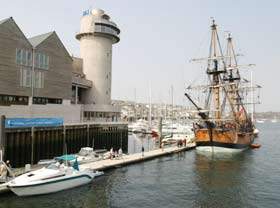



 CORNISH
CRUISING
CORNISH
CRUISING